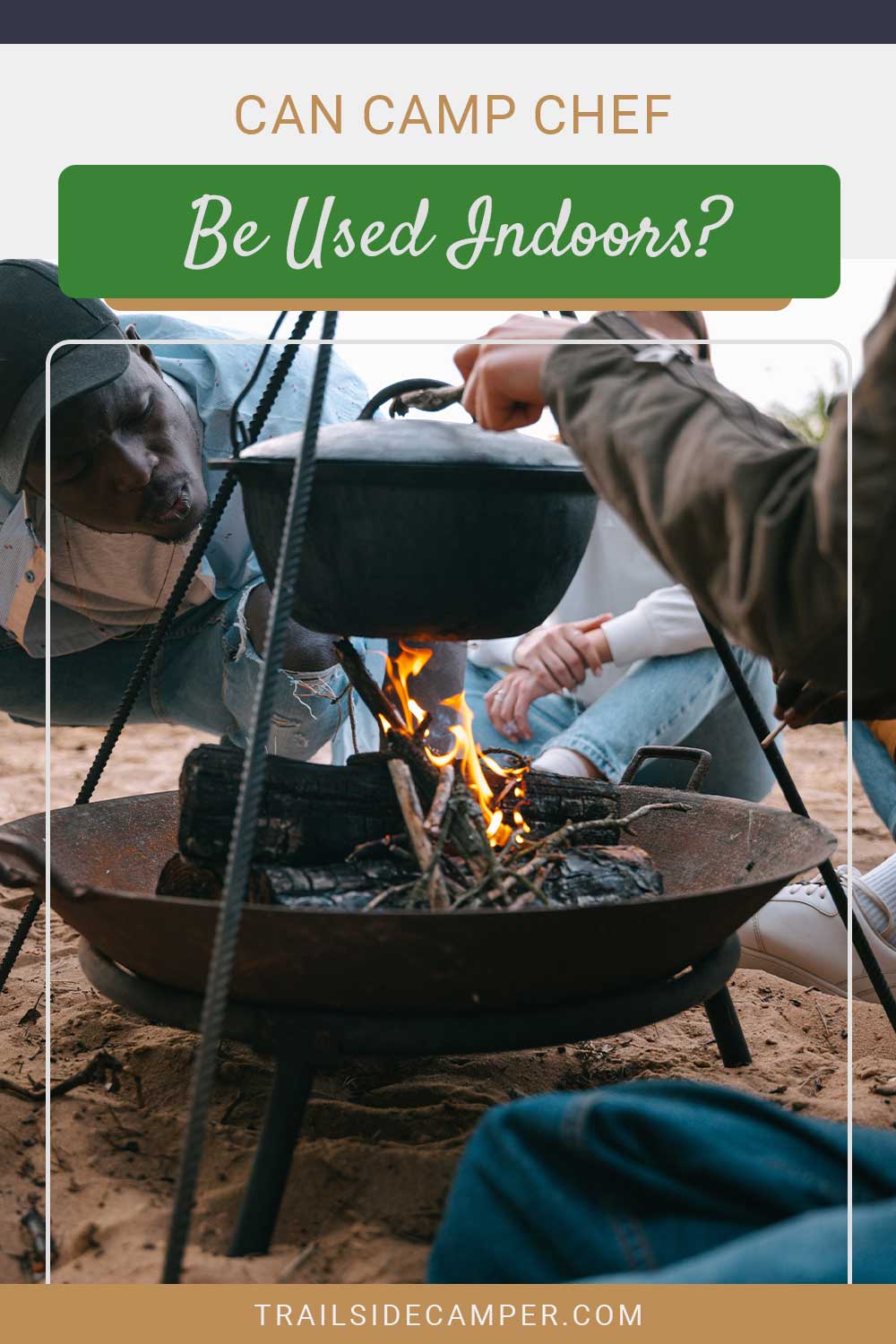Camp Chef has many cooking systems ranging from small countertop units to 16 in 3 burner stand-alone units, even a portable flat-top grill. There are a couple of reasons why you wouldn’t want to use your Camp Chef inside.
One reason is these cook systems are powered by propane. Propane enclosed in a building without proper ventilation can be quite dangerous.
Probably the most important reason is the Camp Chef creators say they don’t do it. They have tested and ensured the systems are safe only for use in outdoor spaces.
Is it a Fire Hazard?
A properly functioning and correctly used Camp Chef should pose a minimal fire hazard. However, we wouldn’t go so far as to say it poses no threat at all. You’ll be using propane gas burners that produce an open flame.
However, the brand has conducted safety tests on all its products. All of their systems have undergone demanding tests to ensure safety of these cook systems. Operator care and proper use will be the final defense against unintended fires.
In order to mitigate some of the chances of fire, you can take a couple of safety steps. Never leave your grills alone. Don’t wear loose clothing around the burners and don’t lay towels on or too close to the burners. Clear any grease as soon as you notice a spill.
Always have a fire extinguisher close to your cooking area, don’t think you can rely on only water to put out a fire. Sometimes water can make the fire worse.
Can You Get Poisoned?
Eating food cooked on gas grills is generally safe. Your main safety concern should be issued with the gas being used. Camp Chef systems use propane as a heat source, and propane does need to be used cautiously. Ventilation is going to be your best friend.
Stoves powered by natural gas/propane can generate various airborne contaminants like formaldehyde and carbon monoxide that are toxic to both people and animals. You can be proactive in reducing this risk by ensuring that you are using these products outdoors only.
Camp Chef offers a pellet-type smoker option, in which you should only use food-grade pellets to prevent any negative effects.
How Should You Ventilate the Tent if You Still Decide to Do it?
Just to reiterate, Camp Chef has been approved only for use outdoors. If you do still decide to use your Camp Chef inside your tent, which again is extremely discouraged, there are a few safety precautions.
Before addressing ventilation, a step you could take would be to somehow station your propane tank outside your tent. Keep all doors and windows of your tent open. If you have an awning, use that as opposed to being completely inside your tents.
Awning or vestibules can be easily ventilated, and any trapped carbon monoxide may stay there rather than leak into the tent.
At least two doors or windows should be left slightly open, one on each side, and one side zipped higher than the other so that warm air may rise out of the tent and draw in cold, outside air.
Your big concern is carbon monoxide poisoning, which is an odorless, tasteless gas that can build up without your knowledge. Using a carbon monoxide alarm could give early warning of a build-up. Again, using propane inside a tent or camper is strongly, so strongly discouraged.
What Are Your Other Options?
There are so many camp cooking systems on the market. For instance, butane countertop ranges are small, light, and smiley, and the iconic Coleman camp stove usually has two burners and uses small propane canisters.
If you are going to be camping, you need a campfire (unless you are in a no-burn zone, always check). You can use cast iron skillets right over the fire, grab a stick and char up a hotdog over the fire.
Even building a rotisserie over your campfire is an option. Smaller solutions may be something along the lines of quick water boiling that will rapidly heat water so you can rehydrate dehydrated meals. Lastly, sandwiches, zero fire needed!
Meals That Don’t Require Cooking
As mentioned above, sandwiches wouldn’t require cooking, and you can still have a complete meal on a sandwich. On the lighter side, you could build a filling yogurt bowl with yogurt, granola, and fruits of your choosing.
We personally enjoy a nice charcuterie medley. Pre-prepared salads could fill you quite sufficiently without needing to be cooked. Also, cereal if you are so inclined.
There are so many options for no-cook meals, and the world is your oyster. Oysters, by the way, do not need to be cooked either.
Final Thoughts on Can Camp Chef be Used Indoors
We can’t stress this enough, don’t use your Camp Chef inside, and don’t use any propane-type cooker inside. The risk may not necessarily be worth the reward. Bring a sandwich or two to tide you over until you can move your camp stove outside.
If you must absolutely use your propane cooker inside, ensure you can ventilate properly and use a carbon monoxide alarm. Whenever working with fire or anything combustible, it never hurts to have a fire extinguisher handy.
Don’t always rely on water to put out a cooking fire. If you are cooking with grease that catches on fire and you throw water on it, the oil will splash, and the fire will spread.
The options for feeding yourself and your friends and family are endless. Most importantly, don’t forget the graham, mallow, and chocolate.

